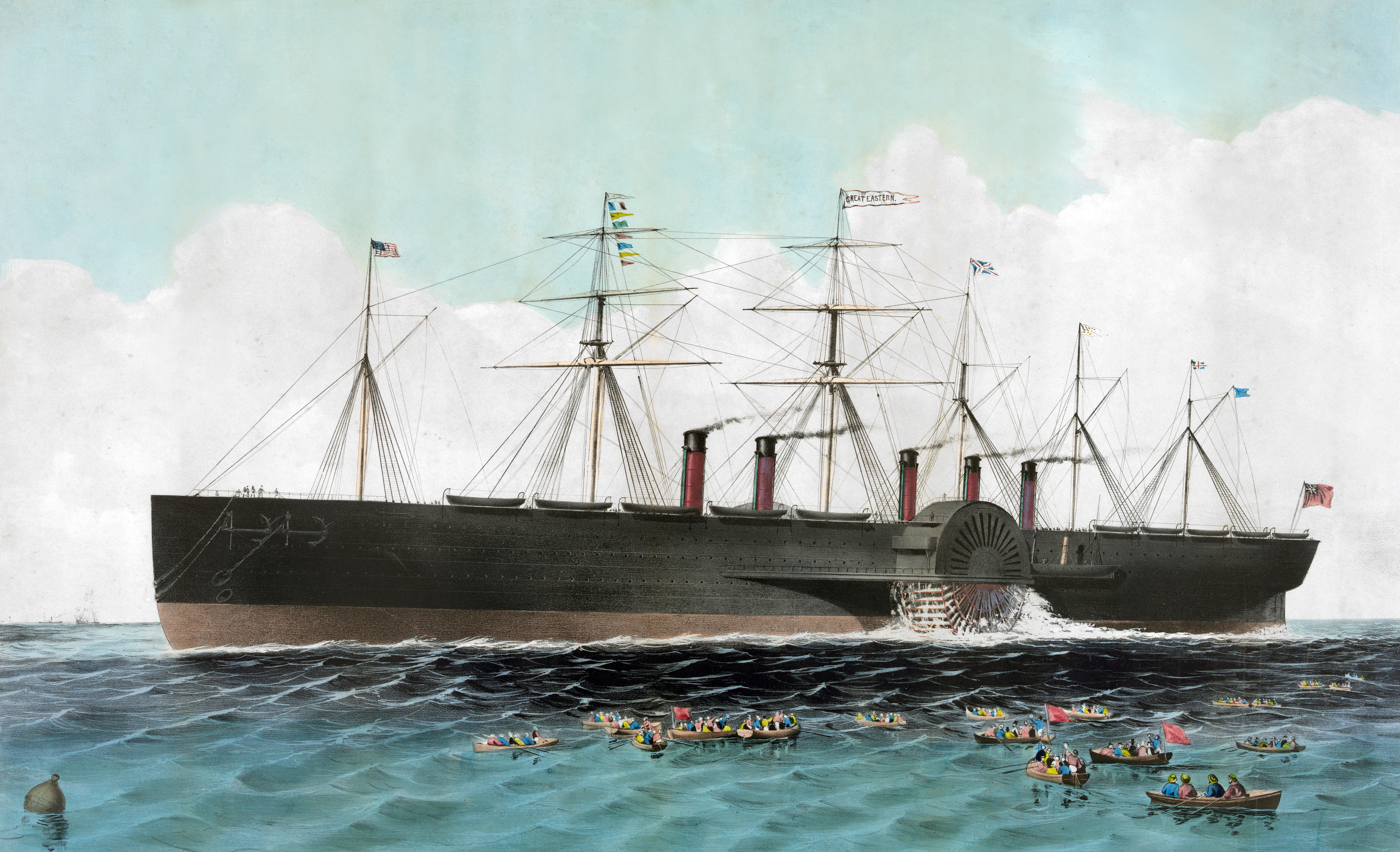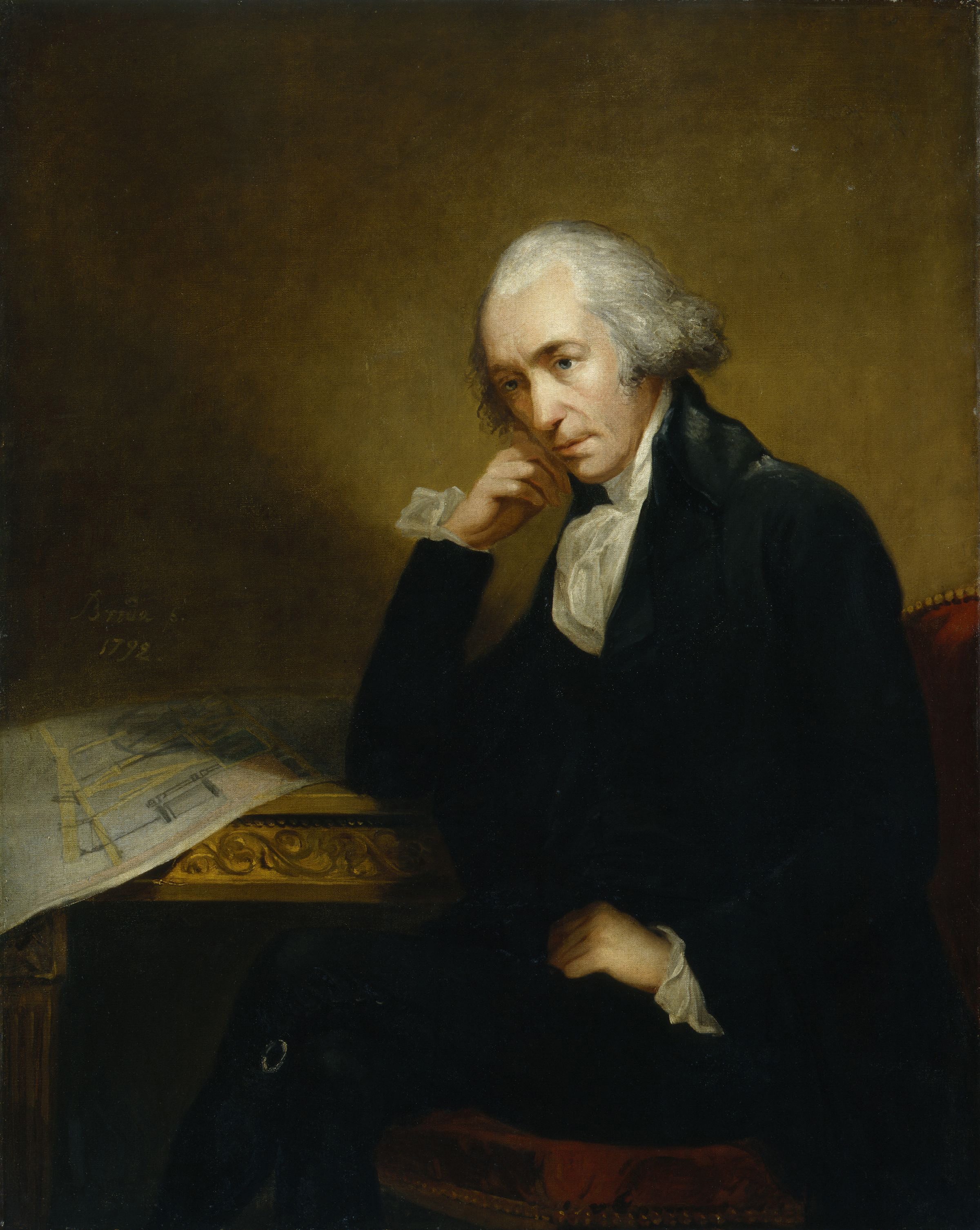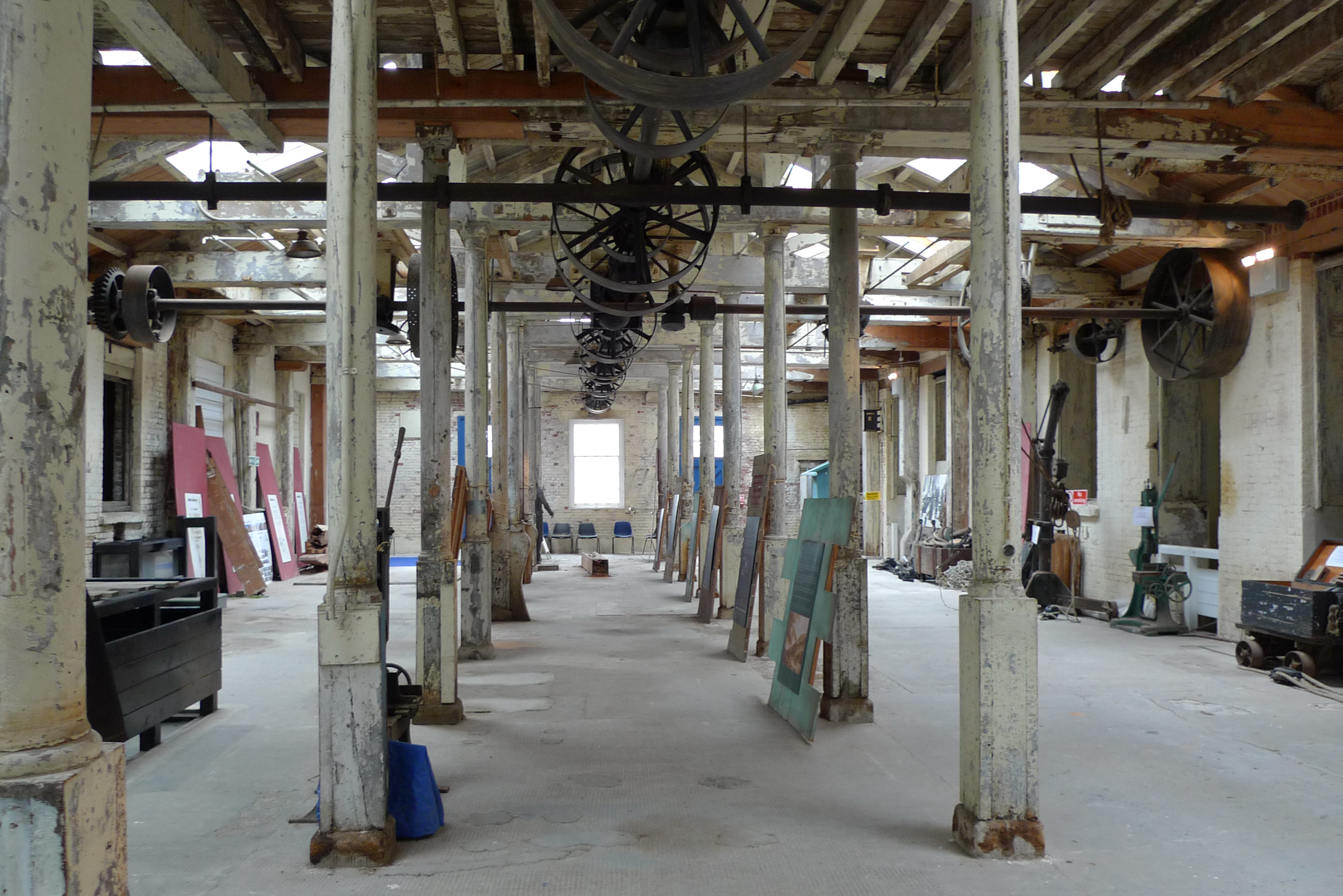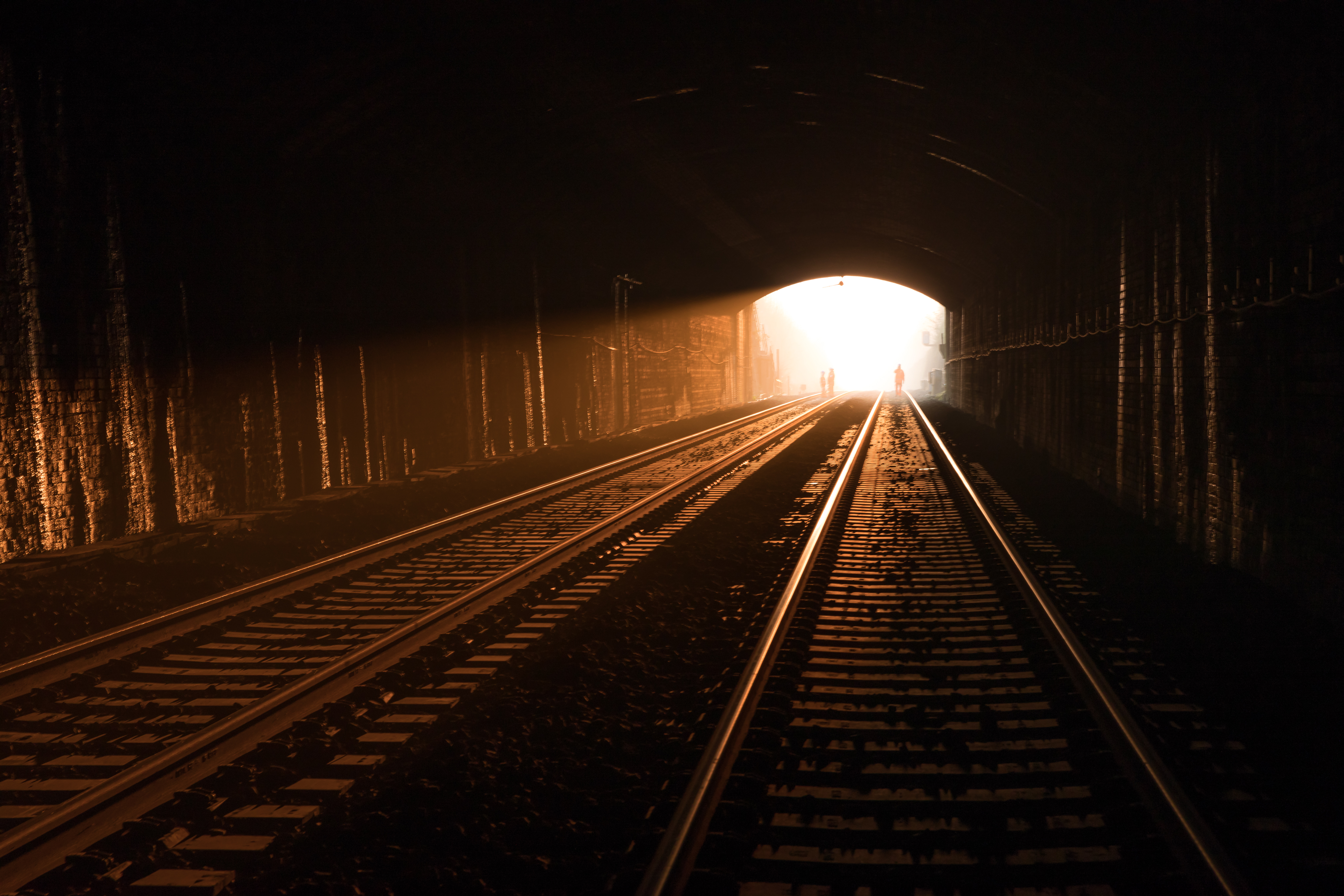|
Isambard Kingdom Brunel
Isambard Kingdom Brunel (; 9 April 1806 – 15 September 1859) was a British civil engineer and mechanical engineer who is considered "one of the most ingenious and prolific figures in engineering history", "one of the 19th-century engineering giants", and "one of the greatest figures of the Industrial Revolution, hochanged the face of the English landscape with his groundbreaking designs and ingenious constructions". Brunel built dockyards, the Great Western Railway (GWR), a series of steamships including the first purpose-built transatlantic steamship, and numerous important bridges and tunnels. His designs revolutionised public transport and modern engineering. Though Brunel's projects were not always successful, they often contained innovative solutions to long-standing engineering problems. During his career, Brunel achieved many engineering firsts, including assisting his father in the building of the first tunnel under a navigable river (the River Thames) and th ... [...More Info...] [...Related Items...] OR: [Wikipedia] [Google] [Baidu] |
Isambard Kingdom Brunel Standing Before The Launching Chains Of The Great Eastern
''Isambard Kingdom Brunel Standing Before the Launching Chains of the Great Eastern'' is a photograph taken by Robert Howlett in November 1857. It shows Brunel, the British engineer, during the troubled first attempt to launch the SS ''Great Eastern'', by far the largest ship constructed to that date. Brunel stands before a drum of chain used during the launching of the vessel; he carries his customary cigar case and his boots and trousers are muddy. Brunel is smoking a cigar and his waistcoat is askew. His pose has been described as casual and self-assured. The image has become iconic of the industrial era and the 19th century and has been included in many published collections of photographs. It was widely reproduced at the time of the ship's eventual launch in January 1858 and again after Brunel's death in 1859. Background Isambard Kingdom Brunel was a British engineer who constructed a number of innovative civil and railway engineering projects and, in 1845, the S ... [...More Info...] [...Related Items...] OR: [Wikipedia] [Google] [Baidu] |
Industrial Revolution
The Industrial Revolution was the transition to new manufacturing processes in Great Britain, continental Europe, and the United States, that occurred during the period from around 1760 to about 1820–1840. This transition included going from hand production methods to machines, new chemical manufacturing and iron production processes, the increasing use of steam power and water power, the development of machine tools and the rise of the mechanized factory system. Output greatly increased, and a result was an unprecedented rise in population and in the rate of population growth. Textiles were the dominant industry of the Industrial Revolution in terms of employment, value of output and capital invested. The textile industry was also the first to use modern production methods. The Industrial Revolution began in Great Britain, and many of the technological and architectural innovations were of British origin. By the mid-18th century, Britain was the world's leadin ... [...More Info...] [...Related Items...] OR: [Wikipedia] [Google] [Baidu] |
Isambard
Isambard is a given name. It is Norman, of Germanic origin, meaning either "iron-bright" or "iron-axe". The first element comes from ''isarn'' meaning iron (or steel). The second element comes from either ''biart-r'' (bright, glorious) or from ''barđa'' (a broad axe). It was used by: * Marc Isambard Brunel (1769–1849), French-born engineer * Isambard Kingdom Brunel (1806–1859), British engineer, son of Marc Isambard Brunel * Sir Isambard Owen (1850–1927), British physician and university academic, son of an employee of Isambard Kingdom Brunel Variation * Isambart (8th century), Frankish count See also * Isembard (other) * Isambard Brunel (other) Isambard Brunel may refer to individuals from three generations of the engineering dynasty: * Sir Marc Isambard Brunel (1769–1849), French-born engineer who settled in England * Isambard Kingdom Brunel (1806–1859), English mechanical and civi ... References {{given name ... [...More Info...] [...Related Items...] OR: [Wikipedia] [Google] [Baidu] |
Portsmouth Block Mills
The Portsmouth Block Mills form part of the Portsmouth Dockyard at Portsmouth, Hampshire, England, and were built during the Napoleonic Wars to supply the British Royal Navy with pulley blocks. They started the age of mass-production using all-metal machine tools and are regarded as one of the seminal buildings of the British Industrial Revolution. They are also the site of the first stationary steam engines used by the Admiralty. Since 2003 English Heritage has been undertaking a detailed survey of the buildings and the records relating to the machines. Development of Portsmouth Dockyard The Royal Navy had evolved with Britain's development by the middle of the eighteenth century into what has been described as the greatest industrial power in the western world. The Admiralty and Navy Board began a programme of modernisation of dockyards at Portsmouth and Plymouth such that by the start of the war with Revolutionary France they possessed the most up-to-date fleet facilit ... [...More Info...] [...Related Items...] OR: [Wikipedia] [Google] [Baidu] |
Hampshire
Hampshire (, ; abbreviated to Hants) is a ceremonial county, ceremonial and non-metropolitan county, non-metropolitan counties of England, county in western South East England on the coast of the English Channel. Home to two major English cities on its south coast, Southampton and Portsmouth, Hampshire is the 9th-most populous county in England. The county town of Hampshire is Winchester, located in the north of the county. The county is bordered by Dorset to the south-west, Wiltshire to the north-west, Berkshire to the north, Surrey to the north-east, and West Sussex to the south east. The county is geographically diverse, with upland rising to and mostly south-flowing rivers. There are areas of downland and marsh, and two national parks: the New Forest National Park, New Forest and part of the South Downs National Park, South Downs, which together cover 45 per cent of Hampshire. Settled about 14,000 years ago, Hampshire's recorded history dates to Roman Britain, when its chi ... [...More Info...] [...Related Items...] OR: [Wikipedia] [Google] [Baidu] |
Portsea Island
Portsea Island is a flat and low-lying natural island in area, just off the southern coast of Hampshire in England. Portsea Island contains the majority of the city of Portsmouth. Portsea Island has the third-largest population of all the islands in the British Isles after the mainlands of Great Britain and Ireland; it also has the highest population density of any British Isle, and Portsmouth has the highest population density of any city in the UK outside of London. To the east of Portsea Island lies Hayling Island, separated by Langstone Harbour. To the west is the peninsular mainland town of Gosport, separated by Portsmouth Harbour. To the south, it faces into the Spithead area of the wider Solent. A narrow tidal channel along the northern edge of Portsea Island, known as Portsbridge Creek, separates Portsea Island from the mainland. Three roads connect Portsea Island to the mainland road network; the M275 motorway, the A3 London Road (split on two separate br ... [...More Info...] [...Related Items...] OR: [Wikipedia] [Google] [Baidu] |
100 Greatest Britons
''100 Greatest Britons'' is a television series that was broadcast by the BBC in 2002. It was based on a television poll conducted to determine who the British people at that time considered the greatest Britons in history. The series included individual programmes featuring the top ten, with viewers having further opportunity to vote after each programme. It concluded with a debate and final determination of the ranking of the top ten. Although many living people were included among the top 100, all of the top ten were deceased. Poll The poll resulted in nominees including Guy Fawkes, who was executed because of his role in the plot to blow up the Parliament of England; Oliver Cromwell, who created a republican British state (the Commonwealth of England, Scotland, and Ireland); Richard III, suspected of murdering his nephews; James Connolly, an Irish nationalist and socialist who was executed by the Crown due to his part in the 1916 Easter Rising; Thomas Paine, who wrote agai ... [...More Info...] [...Related Items...] OR: [Wikipedia] [Google] [Baidu] |
Standard Gauge
A standard-gauge railway is a railway with a track gauge of . The standard gauge is also called Stephenson gauge (after George Stephenson), International gauge, UIC gauge, uniform gauge, normal gauge and European gauge in Europe, and SGR in East Africa. It is the most widely used track gauge around the world, with approximately 55% of the lines in the world using it. All high-speed rail lines use standard gauge except those in Russia, Finland, and Uzbekistan. The distance between the inside edges of the rails is defined to be 1435 mm except in the United States and on some heritage British lines, where it is defined in U.S. customary/Imperial units as exactly "four feet eight and one half inches" which is equivalent to 1435.1mm. History As railways developed and expanded, one of the key issues was the track gauge (the distance, or width, between the inner sides of the rails) to be used. Different railways used different gauges, and where rails of different gauge m ... [...More Info...] [...Related Items...] OR: [Wikipedia] [Google] [Baidu] |
Broad-gauge Railway
A broad-gauge railway is a railway with a track gauge (the distance between the rails) broader than the used by standard-gauge railways. Broad gauge of , commonly known as Russian gauge, is the dominant track gauge in former Soviet Union ( CIS states, Baltic states, Georgia and Ukraine), Mongolia and Finland. Broad gauge of , commonly known as Irish Gauge, is the dominant track gauge in Ireland, and the Australian states of Victoria and Adelaide. Broad gauge of , commonly known as Iberian gauge, is the dominant track gauge in Spain and Portugal. Broad gauge of , commonly known as Indian gauge, is the dominant track gauge in India, Pakistan, Bangladesh, Sri Lanka, Argentina, Chile, and on BART (Bay Area Rapid Transit) in the San Francisco Bay Area. This is the widest gauge in common use anywhere in the world. It is possible for trains on both Iberian gauge and Indian gauge to travel on each other's tracks with no modifications in the vast majority of cases. History In ... [...More Info...] [...Related Items...] OR: [Wikipedia] [Google] [Baidu] |
Box Tunnel
Box Tunnel passes through Box Hill on the Great Western Main Line (GWML) between Bath and Chippenham. The tunnel was the world's longest railway tunnel when it was completed in 1841. Built between December 1838 and June 1841 for the Great Western Railway (GWR) under the direction of Isambard Kingdom Brunel, the straight tunnel descends on a 1 in 100 gradient from its eastern end. At the time the tunnel's construction was considered dangerous due to its length and the composition of the underlying strata. The west portal is Grade II* listed and the east portal is Grade II listed. Ammunition was stored near the tunnel during World War II, reusing mine workings. During the 2010s, the tunnel was modified and the track lowered to prepare it for electrification. History Background During the 1830s, Isambard Kingdom Brunel developed a plan for a railway running east–west between London and Bristol. The Great Western Main Line, would maintain either level ground or gentle gradient ... [...More Info...] [...Related Items...] OR: [Wikipedia] [Google] [Baidu] |
River Thames
The River Thames ( ), known alternatively in parts as the River Isis, is a river that flows through southern England including London. At , it is the longest river entirely in England and the second-longest in the United Kingdom, after the River Severn. The river rises at Thames Head in Gloucestershire, and flows into the North Sea near Tilbury, Essex and Gravesend, Kent, via the Thames Estuary. From the west it flows through Oxford (where it is sometimes called the Isis), Reading, Henley-on-Thames and Windsor. The Thames also drains the whole of Greater London. In August 2022, the source of the river moved five miles to beyond Somerford Keynes due to the heatwave in July 2022. The lower reaches of the river are called the Tideway, derived from its long tidal reach up to Teddington Lock. Its tidal section includes most of its London stretch and has a rise and fall of . From Oxford to the Estuary the Thames drops by 55 metres. Running through some of the drier ... [...More Info...] [...Related Items...] OR: [Wikipedia] [Google] [Baidu] |
Navigability
A body of water, such as a river, canal or lake, is navigable if it is deep, wide and calm enough for a water vessel (e.g. boats) to pass safely. Such a navigable water is called a ''waterway'', and is preferably with few obstructions against direct traverse that needed avoiding, such as rocks, reefs or trees. Bridges built over waterways must have sufficient clearance. High flow speed may make a channel unnavigable due to risk of ship collisions. Waters may be unnavigable because of ice, particularly in winter or high-latitude regions. Navigability also depends on context: a small river may be navigable by smaller craft such as a motorboat or a kayak, but unnavigable by a larger freighter or cruise ship. Shallow rivers may be made navigable by the installation of locks that regulate flow and increase upstream water level, or by dredging that deepens parts of the stream bed. Inland water transport systems Inland Water Transport (IWT) Systems have been used for centur ... [...More Info...] [...Related Items...] OR: [Wikipedia] [Google] [Baidu] |








